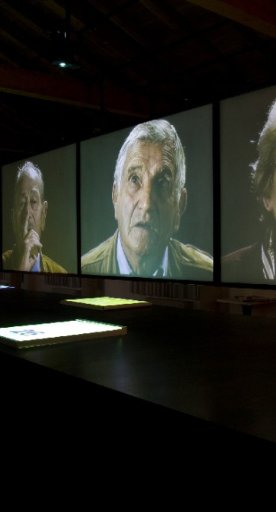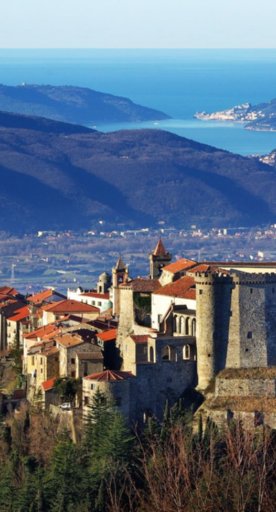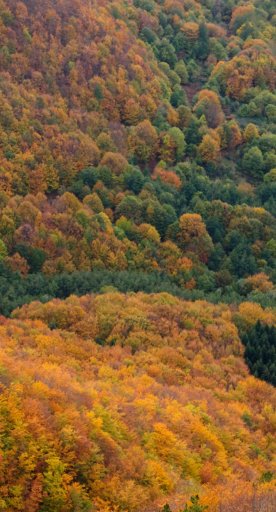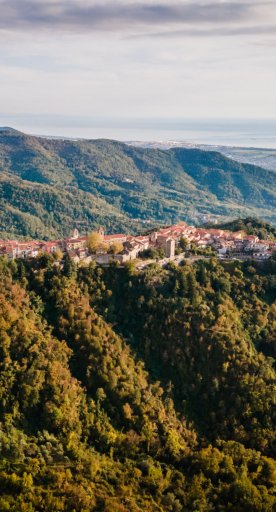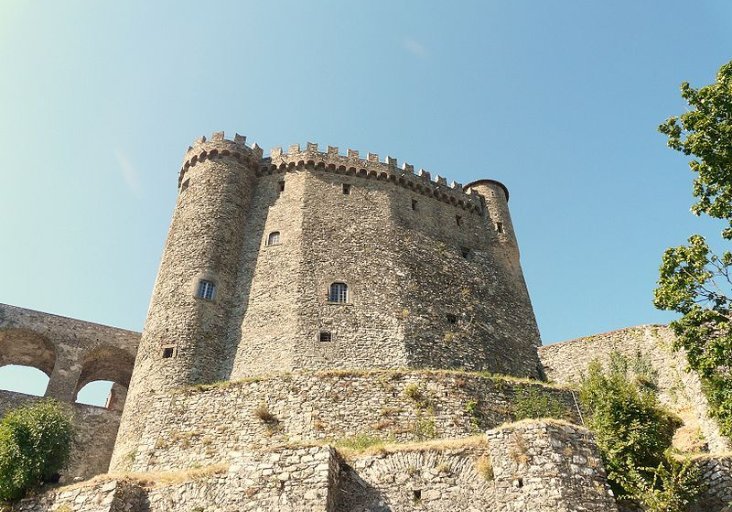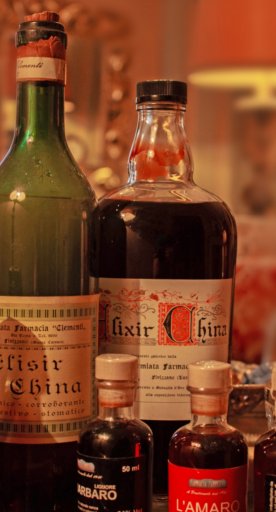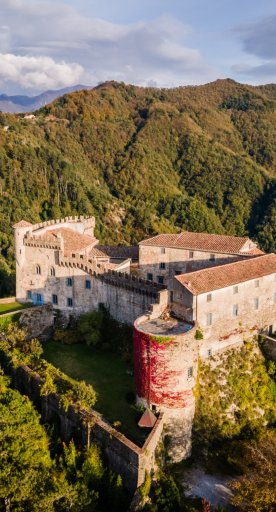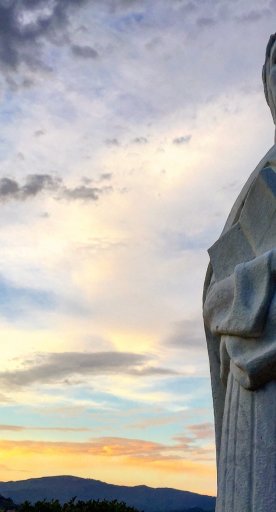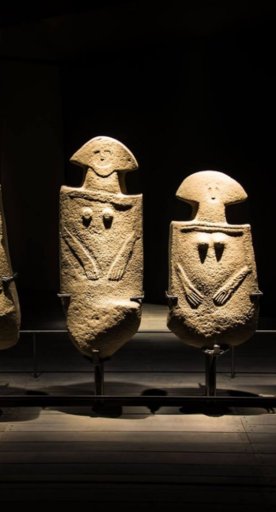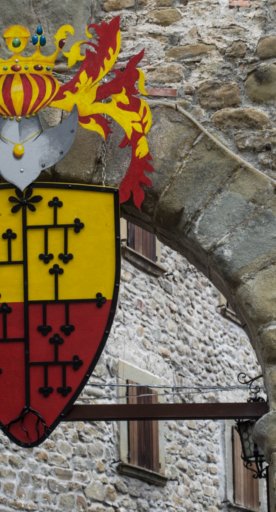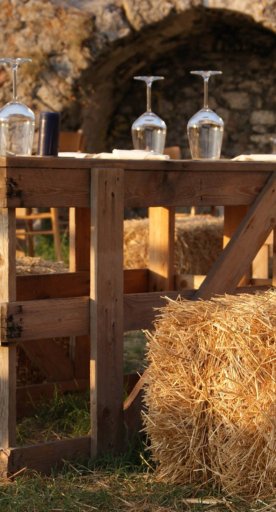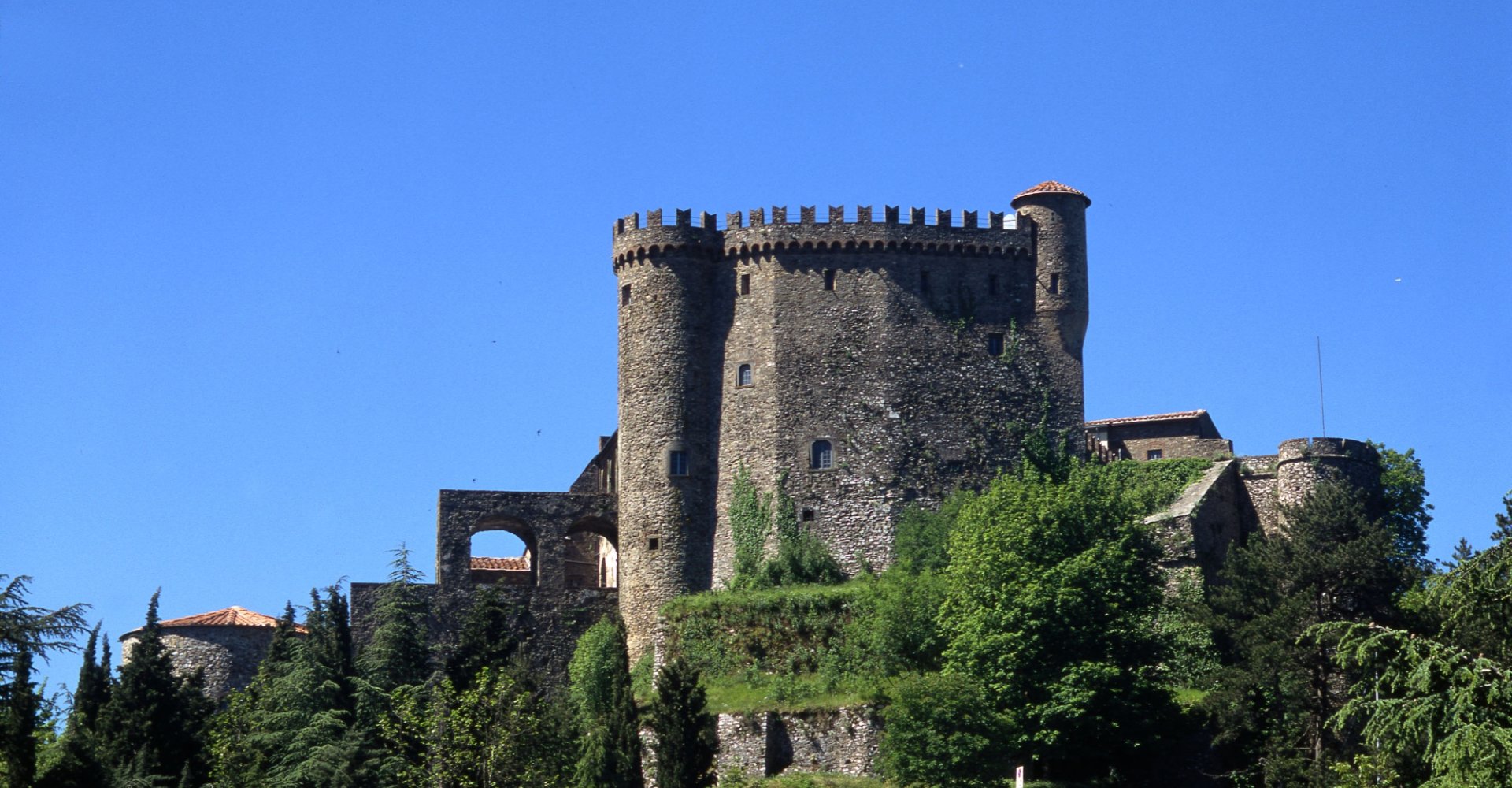
Fosdinovo
The fortified village which dominates the Val di Magra and Luni plains
Fosdinovo is a historic town which dominates the Val di Magra and Luni plains. For centuries it served as a gateway to the historic Lunigiana region, whose streets exude the air of a borderland; you can smell both the sea and mountains.
Its cuisine serves as the best example of its hybrid nature, with inviting typical dishes just waiting to be discovered while you admire the panoramic view and explore the surroundings, thanks to a dense trail network.
Since 2014 Fosdinovo, with its perfectly conserved castle-fortress, is one of the Orange Flag villages of the Italian Touring Club.
What to see in Fosdinovo
The beautiful Malaspina Castle is the town's main symbol, a structure that looms over the hilltop and residential area upholding its reputation as one of the most beautiful and well-conserved fortresses in the Lunigiana region. The basic framework dates back to the 11th century and was enlarged in later epochs with the addition of towers and defensive turrets. In 1340 the nobles of Fosdinovo surrendered the castle to the Spinetta Malaspina family, an event that marked the castle as a political and military centre for the family’s feudal domain.
Throughout the centuries, other imposing towers were added to the castle’s town-facing side and the interior was transformed into an elegant noble residence featuring spectacular frescoed halls.
Head to the Parish Church of San Remigio, a 13th-century church maintaining part of its original structure (commissioned by Luni’s bishops). The building underwent a number of transformations: in the 16th century it was restructured following a fire, changes that led to the Baroque temple we see today vaunting a single nave, presbytery and choir. The church’s interior also houses Galeotto I Malaspina’s tomb, the second marquis of Fosdinovo.
Don’t miss the Compagnia dei Bianchi Oratory, whose construction dates to post-1501 (the year in which the previous oratory was destroyed). The white marble façade dates to the second half of the 17th century; the inside, decorated in Baroque style, contains polychrome marble altars flanking the church walls. Near the main altar you’ll find a beautiful 15th-century wooden statue of the Virgin Mary.
The beautiful Malaspina Castle is the town's main symbol, a structure that looms over the hilltop and residential area upholding its reputation as one of the most beautiful and well-conserved fortresses in the Lunigiana region. The basic framework dates back to the 11th century and was enlarged in later epochs with the addition of towers and defensive turrets. In 1340 the nobles of Fosdinovo surrendered the castle to the Spinetta Malaspina family, an event that marked the castle as a political and military centre for the family’s feudal domain.
Throughout the centuries, other imposing towers were added to the castle’s town-facing side and the interior was transformed into an elegant noble residence featuring spectacular frescoed halls.
Head to the Parish Church of San Remigio, a 13th-century church maintaining part of its original structure (commissioned by Luni’s bishops). The building underwent a number of transformations: in the 16th century it was restructured following a fire, changes that led to the Baroque temple we see today vaunting a single nave, presbytery and choir. The church’s interior also houses Galeotto I Malaspina’s tomb, the second marquis of Fosdinovo.
Don’t miss the Compagnia dei Bianchi Oratory, whose construction dates to post-1501 (the year in which the previous oratory was destroyed). The white marble façade dates to the second half of the 17th century; the inside, decorated in Baroque style, contains polychrome marble altars flanking the church walls. Near the main altar you’ll find a beautiful 15th-century wooden statue of the Virgin Mary.
Nearby
Near Fosdinovo you’ll find the fortified town of Ponzanello. Established in the 12th century and enlarged over time, the town presents impressive city walls and three still-intact city gates. The fortress rises from a hilltop and looms over the tiny town, almost appearing as a defensive residence. Ponzanello’s strategically located castrum implies that this area was one of the inland’s most important access points to the upper-Tyrrhenian coastline.
Fosdinovo’s territory is also the perfect area for nature lovers of every kind; the area is packed with trekking and mountain-bike paths. The blooming natural world of the mountains surrounding the town is quite a treat to discover.
You’ll find a large number of trails leading through forests, villages, churches and castles. Close to the Via Francigena Toscana (leg 24) is, for example, an enchanting and easily accessible path that runs from Fosdinovo to Aulla, passing through Ponzanello’s castle and the towns of Treschietto and Bibola.
Along this path is the moving Audiovisual Museum of the Resistance, dedicated to World War II and tragic civil massacres that mark Fosdinovo’s more recent history. The museum places remembrance at its core, vaunting a path composed of documents (including interviews, inventory photographs and recordings) displayed on multimedia devices, creating an interactive experience for the museum’s visitors. The museum also houses a photo library specifically dedicated to the Apuo-Lunense Resistance.
Near Fosdinovo you’ll find the fortified town of Ponzanello. Established in the 12th century and enlarged over time, the town presents impressive city walls and three still-intact city gates. The fortress rises from a hilltop and looms over the tiny town, almost appearing as a defensive residence. Ponzanello’s strategically located castrum implies that this area was one of the inland’s most important access points to the upper-Tyrrhenian coastline.
Fosdinovo’s territory is also the perfect area for nature lovers of every kind; the area is packed with trekking and mountain-bike paths. The blooming natural world of the mountains surrounding the town is quite a treat to discover.
You’ll find a large number of trails leading through forests, villages, churches and castles. Close to the Via Francigena Toscana (leg 24) is, for example, an enchanting and easily accessible path that runs from Fosdinovo to Aulla, passing through Ponzanello’s castle and the towns of Treschietto and Bibola.
Along this path is the moving Audiovisual Museum of the Resistance, dedicated to World War II and tragic civil massacres that mark Fosdinovo’s more recent history. The museum places remembrance at its core, vaunting a path composed of documents (including interviews, inventory photographs and recordings) displayed on multimedia devices, creating an interactive experience for the museum’s visitors. The museum also houses a photo library specifically dedicated to the Apuo-Lunense Resistance.
Events
Among the most important events are those linked to historical events and periods such as the Middle Ages, which is celebrated during the Medieval Festival on the first weekend of July. Another such example is the Resistance, which is remembered in a festival that takes place during spring and summer. Even Fosdinovo’s typical dishes have their annual moment in the spotlight: the fourth weekend of July is dedicated to the testarolo, while the third Sunday of October is reserved for the Chestnut Festival. The latter revolves around Castagnaccio and Pattone, typical dishes based on chestnut flour and water.
Among the most important events are those linked to historical events and periods such as the Middle Ages, which is celebrated during the Medieval Festival on the first weekend of July. Another such example is the Resistance, which is remembered in a festival that takes place during spring and summer. Even Fosdinovo’s typical dishes have their annual moment in the spotlight: the fourth weekend of July is dedicated to the testarolo, while the third Sunday of October is reserved for the Chestnut Festival. The latter revolves around Castagnaccio and Pattone, typical dishes based on chestnut flour and water.
Typical products and dishes
The slopes overlooking the sea allow for some of Fosdinovo’s most precious and well-known products. Here, where vines, olive trees and Mediterranean scrub grow luxuriantly, excellent quality extra virgin olive oil and wines are produced such as the Vermentino Colli di Luni Bianco DOC.
Fosdinovo is part of the Colli di Candia and Lunigiana Wine Route, which goes from Pontremoli to Montignoso, offering the opportunity to try local wines while passing through the Apuan Alps’ breathtaking landscape.
Many of the area’s typical dishes are based on chestnut flour. In addition to the traditional Castagnaccio are Pattone and Ciani, the first of which is cooked on chestnut leaves, the latter between two iron heads, whilst both are served rolled and stuffed with ricotta or hazelnut cream.
A must-try are the testaroli, one of the area’s typical dishes prepared in the Fosdinovese way: served whole, rolled up like a sandwich and stuffed with olive oil, pesto, grated pecorino, as well as mushroom sause, cured meats, and stracchino; there are also versions with sweet fillings instead.
Heading down from Fosdinovo and arriving in the hamlet of Ponzanello, the focaccetta steals the headline. This is a local variant of the Emilian tigella, perfectly paired with cold meat cuts, cheeses, sauces or hazelnut cream during the traditional late July celebrations.
The slopes overlooking the sea allow for some of Fosdinovo’s most precious and well-known products. Here, where vines, olive trees and Mediterranean scrub grow luxuriantly, excellent quality extra virgin olive oil and wines are produced such as the Vermentino Colli di Luni Bianco DOC.
Fosdinovo is part of the Colli di Candia and Lunigiana Wine Route, which goes from Pontremoli to Montignoso, offering the opportunity to try local wines while passing through the Apuan Alps’ breathtaking landscape.
Many of the area’s typical dishes are based on chestnut flour. In addition to the traditional Castagnaccio are Pattone and Ciani, the first of which is cooked on chestnut leaves, the latter between two iron heads, whilst both are served rolled and stuffed with ricotta or hazelnut cream.
A must-try are the testaroli, one of the area’s typical dishes prepared in the Fosdinovese way: served whole, rolled up like a sandwich and stuffed with olive oil, pesto, grated pecorino, as well as mushroom sause, cured meats, and stracchino; there are also versions with sweet fillings instead.
Heading down from Fosdinovo and arriving in the hamlet of Ponzanello, the focaccetta steals the headline. This is a local variant of the Emilian tigella, perfectly paired with cold meat cuts, cheeses, sauces or hazelnut cream during the traditional late July celebrations.
